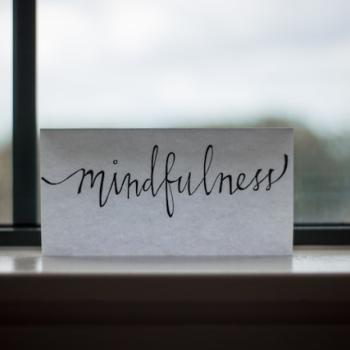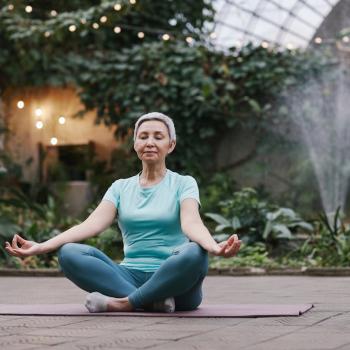
Image via Dorota Dylka on Unsplash
Amidst the hustle and bustle of life, creating a calming retreat at home can help you distance yourself from the demands and distractions of the world. If you’re lucky enough to have a spacious backyard, you might consider transforming a spot into a serene meditation garden.
With more than 36 million regular practitioners in the U.S., the art of meditation is becoming an increasing aspect of people’s lives. Discover why you should meditate today and how to build an outdoor sanctuary to begin your inward journey.
Why Create a Meditation Garden
People have been practicing meditation for thousands of years to help deepen their understanding of life. These days, this custom is considered a way to perform a body scan and lower anxiety levels.
Meditation also allows you to pray and deepen your faith. When meditation becomes a part of your daily repertoire, it can offer benefits such as:
- Reduced stress: Meditation helps block stress-causing hormones that may disrupt sleep and promote depression.
- Self-awareness: This practice enables you to develop a greater understanding of yourself, which can also increase your belief in your own ability to overcome challenges.
- Better immune health: Consistent practice helps reduce the body’s stress response, decreasing the risk of fatigue and pain.
6 Steps to Creating a Meditation Garden in Your Backyard
Transform that extra space into your backyard into a sanctuary where you and your loved ones can destress and connect with nature. Here are some tips to help you create a relaxing meditation garden.
1. Determine Garden Size
Think about the purpose of your meditation garden. Are you looking for a private space only you can enjoy or a more versatile area where you can host more people? Assess your goals and work with what you currently have.
Next, think about the sitting area and garden shape. Is there a pattern that calms and energizes you? Keep these in mind when planning your outdoor sanctuary.
2. Select a Serene Spot
Choosing a quiet area in your backyard allows you to connect with yourself and the world more deeply. Without distractions and noise, it’s easier to practice meditation in peace.
Others want a shady, private garden that creates a sense of enclosure. If this aligns with your vision, use gates, fences, ceilings and walls to make a sense of privacy. These physical boundaries also help separate your meditation garden from your home and yard.
If you have the resources, choose a spot farthest from home. This encourages total silence, solitude and connection with nature and your thoughts. Soothing nature sounds are also more pronounced in spaces further from your home.
3. Assess Weather Conditions
What are the usual weather conditions in your ideal spot? For instance, if it frequently rains in your area, consider installing a covered place where you can enjoy the sound of the rain. Ideally, you should pick a site protected from the harsh elements of nature, like strong winds, as these may cause discomfort during meditation.
However, if your spot is prone to flooding, it’s best to put your meditation spot somewhere elevated and sheltered.
4. Incorporate The Elements
The great gift of nature plays a huge role in your meditation garden. You should create harmony between your surroundings and sanctuary for an improved meditative experience. One way to do this is by incorporating these five elements:
- Earth: Soil, rocks and stones are earthy elements that create a sense of support and security. Adding these to your garden increases calmness and relaxation.
- Wood: Trees, plants and wooden accents represent the wood element. Benches and planters boost the natural and organic appeal of your garden. Trees signify strength, while plants provide a sense of growth.
- Fire: Use a fire pit, lanterns and candles to signify the fire element. These components add warmth to the atmosphere, promoting calmness.
- Water: Incorporate water features such as a fountain or pond. The sound of flowing water helps put your mind at ease and promotes inner peace.
- Metal: Bells, wind chimes and metal statues help create a sense of focus and clarity. You can also use anything made of metallic colors, such as gold and silver, for elegance.
5. Choose the Best Plants
Plants remind you of growth and renewal. Similarly, gardening allows you to be one with nature. The planting process — placing your hands and feet in the soil helps ground your energies or recharge your body.
No green thumb? No problem. There are some tools in the market that make gardening easy. For instance, seed mats help speed up the growth of flowers — you just need to put the sheet in the dirt, cover it with soil and water as needed.
It’s also essential to develop a symbiotic relationship with your plants. Here are some options to enhance meditation and attract suitable creatures to your garden:
- Milkweed: This plant attracts butterflies and hummingbirds, bringing a scent that can put you in a peaceful mood. Consider creating a space filled with milkweed for butterflies if you believe this will benefit you.
- Sunflowers: Focal points are essential when meditating. Tall, vibrant flowers such as sunflowers make a beautiful eye interest.
- Gardenia: This shrub emits a citrusy fragrance that helps elevate your mood.
- Florida Sunshine Anise: This evergreen shrub has vibrant foliage and scent that adds to the overall beauty of your meditation spot.
- Star Jasmine: This woody climber produces fragrant white flowers during summer.
- Aztec Pearl: Commonly known as Mexican Orange Blossom, this shrub comes with dark green leaves that beautifully contrast with pink-tinged white flowers.
6. Enhance with Statues and Art
Your meditation garden should include visual cues encouraging you to breathe or pause to connect with gratitude. For instance, you can choose a wooden cross as your focal point while meditating on God’s word. This large piece can be the focal point for your space and then several more minor elements can be placed throughout the area.
Create Your Garden Today
In the process of creating your outdoor oasis, remember to incorporate these helpful tips. So, go ahead — dig in the soil, incorporate thoughtful art and watch your backyard transform into a space of peace.













